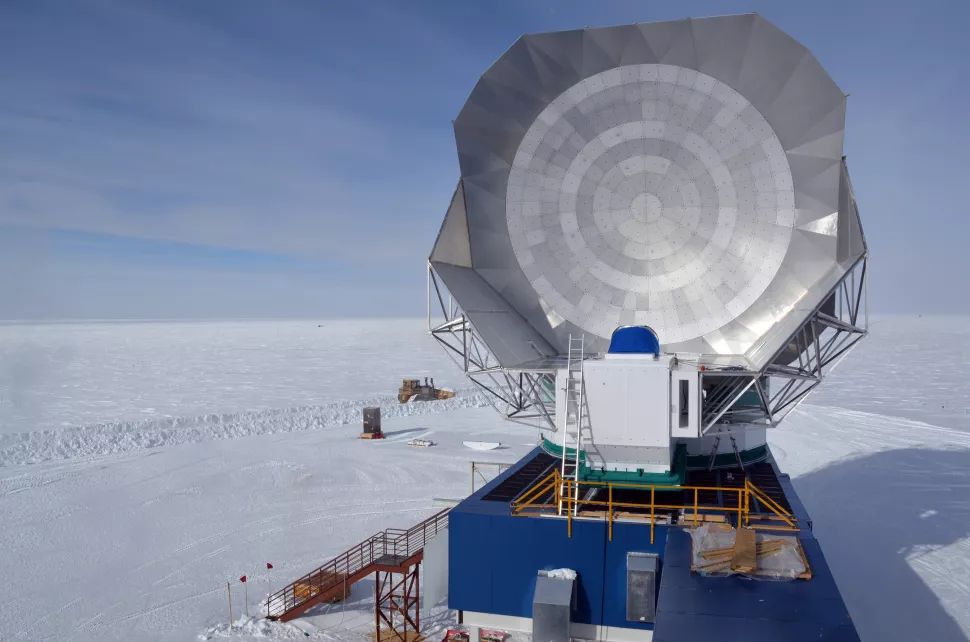Black holes, the enigmatic cosmic entities with gravity so strong that nothing, not even light, can escape their grasp, have long fascinated scientists and astronomers. To unravel their secrets, researchers have harnessed the power of a groundbreaking technology known as the Event Horizon Telescope (EHT). In this article, we delve into the workings of the EHT and explore how it enables us to capture unprecedented images of black holes, shedding light on the nature of these celestial phenomena.

Unveiling the Invisible: The Concept of Event Horizon
The event horizon is a defining feature of a black hole—a boundary beyond which nothing can escape. It is the point of no return, where the gravitational pull becomes so immense that not even light can break free. The EHT’s primary objective is to capture images of this elusive boundary and offer insights into the physics that govern black holes.
The Power of Global Collaboration: Network of Observatories
The EHT is not a single telescope but a network of observatories strategically positioned around the globe. By synchronizing their observations, these observatories create a virtual telescope with a resolution equivalent to a dish spanning the entire Earth. This collective effort enables the EHT to capture details finer than ever before, essential for imaging black holes.
Harnessing Radio Waves: The Key to Black Hole Imaging
Black holes emit radio waves due to the superheated matter swirling around their event horizons. The EHT focuses on these radio emissions, utilizing an array of radio telescopes to observe and record the signals. These telescopes work in unison, collecting vast amounts of data that is later combined and processed to generate high-resolution images.
Interferometry: The Technique Behind the EHT
Interferometry is a fundamental technique employed by the EHT to create its virtual telescope. It involves combining signals from multiple telescopes to achieve a much higher resolution than what each telescope could achieve individually. By combining the observations, the EHT effectively creates a superpowered telescope capable of peering deep into the heart of a black hole.
Data Processing and Reconstruction: Piecing Together the Puzzle
Capturing data from multiple telescopes spread across the globe presents a significant computational challenge. Advanced algorithms and computational techniques are employed to synchronize and process the data. This intricate process involves carefully aligning the signals and reconstructing the final image, revealing the silhouette of a black hole against its luminous accretion disk.
The Historic First: Imaging the Event Horizon
In 2019, the EHT made headlines when it unveiled the first-ever image of a black hole’s event horizon—a remarkable achievement in astrophysics.

The image captured the supermassive black hole at the center of the galaxy M87, showcasing a bright ring surrounding a dark central region. This breakthrough not only confirmed the existence of black holes but also provided a visual confirmation of their predicted features.
Conclusion:
The Event Horizon Telescope revolutionizes our understanding of black holes by allowing us to directly observe their event horizons. Through global collaboration, radio wave observations, and advanced data processing, the EHT has ushered in a new era of black hole imaging. With each new image, we uncover more about the nature of these cosmic wonders, pushing the boundaries of our knowledge and fueling scientific curiosity. The EHT’s incredible achievements inspire us to continue exploring the depths of the universe, where countless mysteries still await our discovery.
FAQ’S: Event Horizon Telescope
Q: What is the purpose of the Event Horizon Telescope (EHT)?
A: The purpose of the Event Horizon Telescope (EHT) is to capture high-resolution images of black holes and study their event horizons, providing insights into the nature of these cosmic phenomena.
Q: How does the EHT capture images of black holes?
A: The EHT combines data from multiple radio telescopes located around the world using a technique called interferometry. By synchronizing and processing the collected data, the EHT creates a virtual telescope with exceptional resolution, capable of imaging the event horizon of a black hole.
Q: What are the main challenges in capturing images with the EHT?
A: One of the main challenges of the EHT is synchronizing the observations from multiple telescopes spread across the globe. Additionally, processing and aligning the vast amount of collected data requires advanced computational techniques and algorithms.
Q: What was the significance of the first image captured by the EHT?
A: The first image of the supermassive black hole at the center of the galaxy M87 confirmed theoretical predictions and marked a historic achievement in astrophysics.
